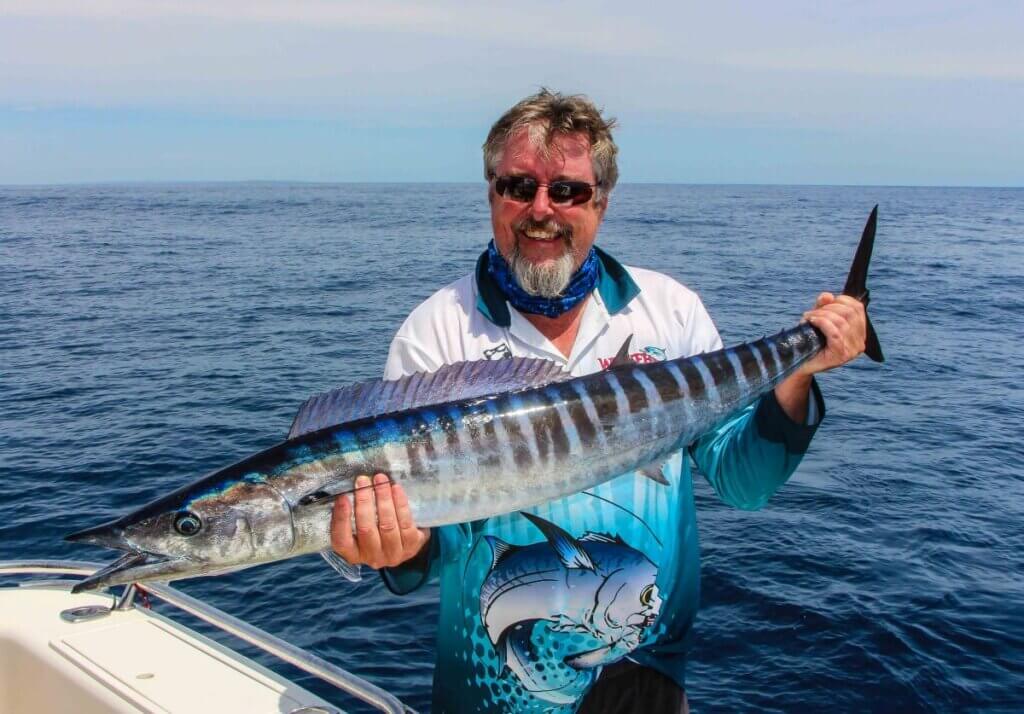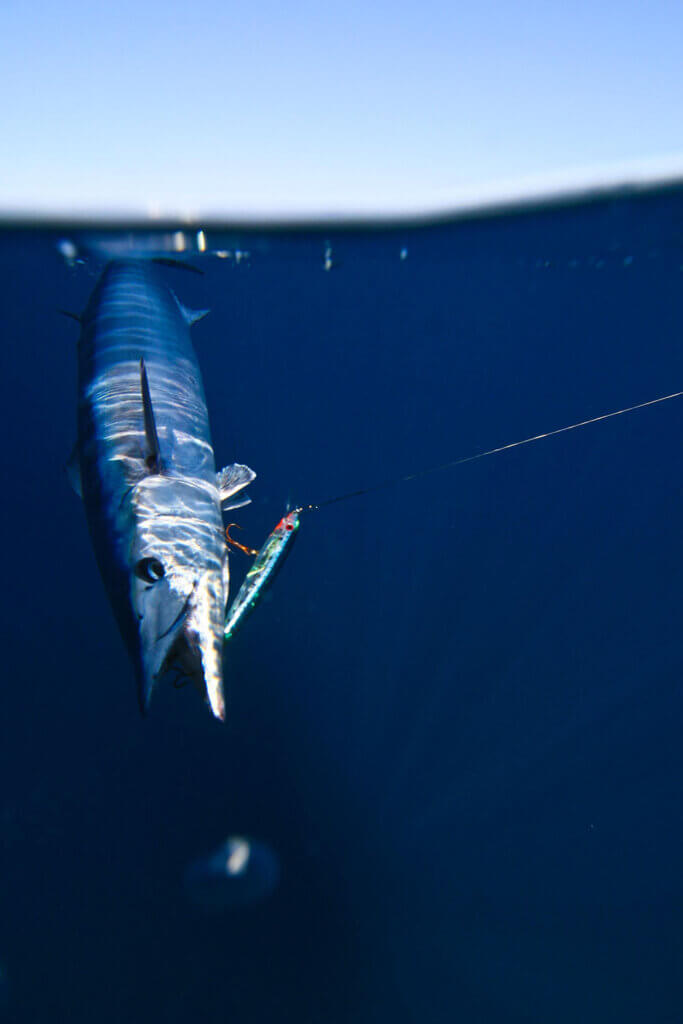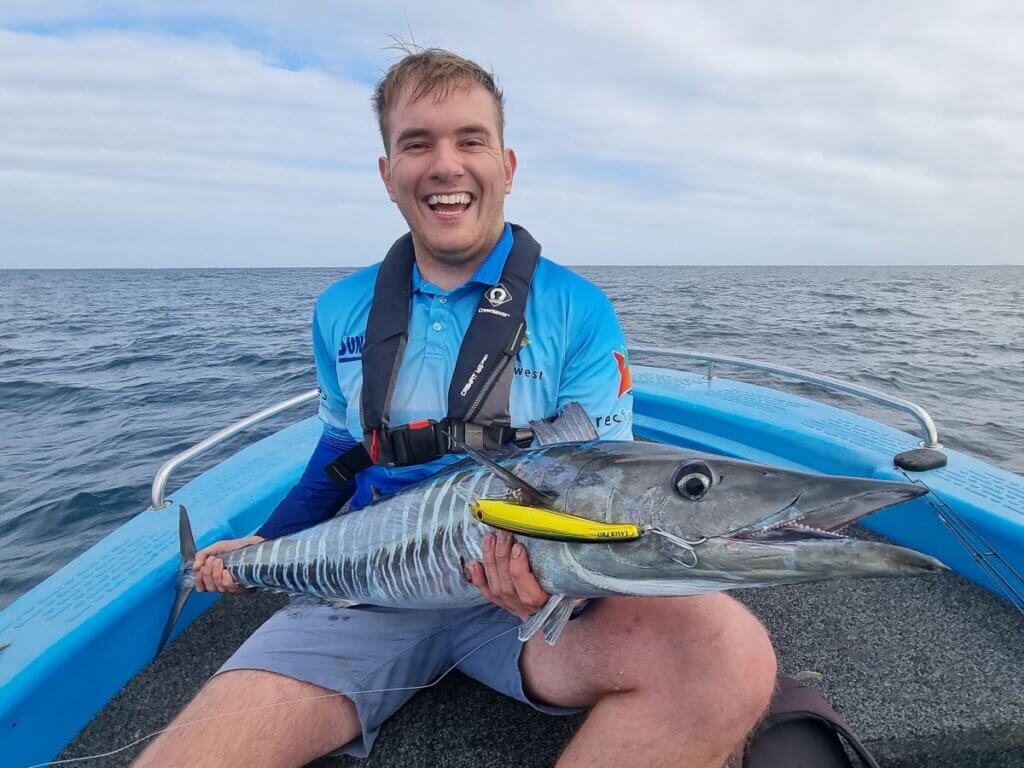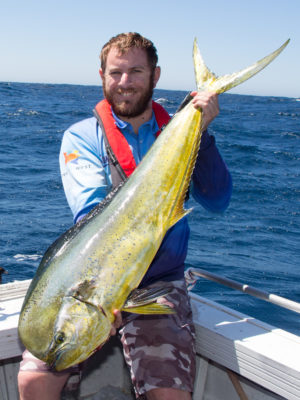Really, if there is a species I probably shouldn’t write about, it would be wahoo, writes Western Angler editor Scott Coghlan in this week’s edition of Scott’s Species! For many years I failed to catch even one of these magnificent looking ocean speedsters.
Species: Wahoo, Acanthocybium solandri
Eating: 4 stars
ID: Similar to a Spanish mackerel, but more elongated body with silver bottom half and dark blue across back, with light blue vertical stripes down side. Sharp, pointed jaw with many small teeth.
It became known as my fishing curse (that and bad weather). I hooked a few though, but it always ended in tears.

I even hooked a good one on an unweighted chunk of fresh fish on a single hook at the Mackerel Islands and played it right to the boat with only mono leader, only for the hook to pop out just a few metres shy of success.
I hooked another one at the Mackies while casting a metal, and it ran under a nearby boat and cut my line on the hull.
I was starting to think I’d never catch one. But then the venerable Craig White of Evolution Charters put me onto one during GAMEX a few years ago.
He saw the wahoo hit the skirted lure meant for a marlin and demanded I take the rod.
It wasn’t really a true capture in my eyes, but I appreciated the thought and Whitey reckoned it was pretty funny!
Since then I have actually managed to catch a handful of wahoo, but haven’t ever had one of those hot sessions they can be known for.
Nonetheless, I will try to shed some light on one of the fastest and tastiest fish in the ocean, which grow rapidly and usually live less than a decade.
A bluewater species mainly, usually found in depths of 100m-plus, wahoo do come in closer and we have encountered them in around 10m of water at the Mackerel Islands.
They are generally a pelagic roamer, but there are spots that do seem to hold numbers of them consistently, such as certain locations off the west coast of the Carnarvon islands.
The waters off Ningaloo are renowned for producing wahoo, as are the Rowley Shoals, Cocos Islands and Christmas Island.

They turn up off Rottnest Island each summer, often around FADs deployed as part of the State-wide FADs program, and have occasionally been known to roam as far as the south coast, but are generally found from the Abrolhos Islands north.
The biggest wahoo I’ve seen was caught at Wreck Point at the Abrolhos, by a bloke who’d only ever caught a trout before and dragged it in backwards.
Most wahoo caught will be between 10kg to 20kg kilos, but bigger ones are taken in WA waters.
As a bluewater species, they are mainly caught by offshore anglers, but the odd one has been caught from shore at locations like Steep Point and Quobba.
Trolling in deep water is definitely the best approach for wahoo and they are happy to hit skirted or minnow lures.
Because they are so fast, capable of speeds of up to 80km/h, lures that can be trolled at a good pace, such as skirts or Halco Maxs, work well, with speeds of up to 18 knots working on wahoo.

Lures than can maintain some depth are usually most effective, with some people using troll weights to keep their lures down. Having said that, I have hooked them on trolled surface lures as well.
If wahoo are around or the target, then some single strand wire is recommended to prevent bite-offs. They can also make a mess of skirts.
Finding wahoo can be tricky and they are often just where you find them, However, working current lines or steep drop-offs in deep water would be good start.
Concentrations of bait should be investigated and finding numbers of wahoo offers the option of lure casting for them.
Aside from that first wahoo with Whitey, all the ones I have caught have been on spin gear and wahoo are great fun that way, as they have blistering runs that makes the line rip through the water and they fight clean. Many are caught on heavier gear suited for marlin, which blunts their sporting capabilities significantly.

